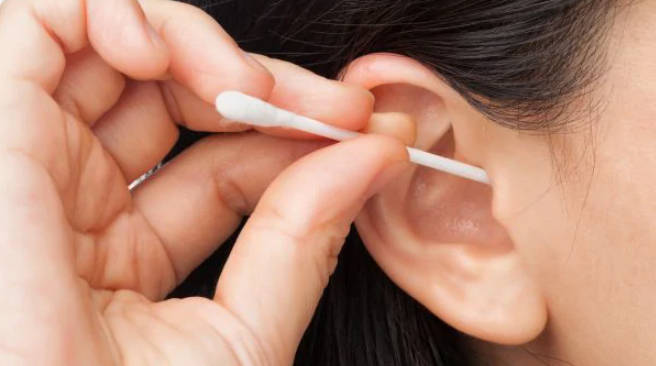How to clean ears at home naturally
Keeping your ears clean is an important part of personal hygiene. However, the delicate structure of the ear canal means that improper cleaning methods can cause damage or infections. This article explores safe and natural ways to clean your ears at home, promoting ear health without risking harm.

Understanding Earwax and Its Role
Before diving into cleaning methods, it’s essential to understand the role of earwax (cerumen). Earwax is a natural substance produced by glands in the ear canal. It serves several vital functions:
- Protection: Earwax traps dust, dirt, and other particles, preventing them from reaching the delicate eardrum.
- Lubrication: It helps to keep the skin of the ear canal moisturized, preventing dryness and itching.
- Antibacterial Properties: Earwax has properties that help prevent bacterial and fungal infections.
Normally, earwax moves out of the ear canal naturally, aided by jaw movements such as talking and chewing. However, excessive buildup can occur, leading to discomfort, hearing loss, or infections.
Signs of Excess Earwax
Excess earwax can cause various symptoms, including:
- Earache
- A feeling of fullness in the ear
- Partial hearing loss
- Tinnitus (ringing in the ear)
- Itchiness or discharge
If you experience severe pain, significant hearing loss, or bleeding, seek medical attention immediately as these could indicate a more serious problem.
Natural Methods to Clean Ears
- Warm Water Flush
A warm water flush is a simple and effective method to clean your ears.
Steps:
- Preparation: Fill a rubber bulb syringe with warm (not hot) water. Ensure the water temperature is comfortable to avoid burns or discomfort.
- Application: Tilt your head to one side and gently pull the outer ear to straighten the ear canal. Slowly squirt a small amount of warm water into the ear.
- Draining: Allow the water to drain out of your ear, holding a towel or bowl underneath to catch the water and any dislodged earwax.
- Repetition: Repeat the process on the other ear if necessary.
This method helps to soften and remove earwax naturally without pushing it further into the ear canal.
- Olive Oil or Almond Oil
Olive oil and almond oil are excellent natural remedies for softening earwax, making it easier to remove.
Steps:
- Preparation: Warm the oil slightly. You can test the temperature by placing a few drops on your wrist.
- Application: Using a dropper, place 2-3 drops of warm oil into the affected ear while lying on your side.
- Waiting: Stay in this position for 5-10 minutes to allow the oil to soften the wax.
- Cleaning: Tilt your head to the opposite side to let the oil and wax drain out onto a tissue.
This method can be repeated daily for a few days until the earwax naturally makes its way out.
- Hydrogen Peroxide
Hydrogen peroxide can be used to dissolve earwax. A 3% solution is safe for this purpose.
Steps:
- Preparation: Mix equal parts of hydrogen peroxide and water.
- Application: Using a dropper, place 2-3 drops of the mixture into the ear.
- Waiting: You may hear a fizzing sound as the hydrogen peroxide works to dissolve the wax. Leave it in for 5-10 minutes.
- Draining: Tilt your head to let the solution drain out, using a towel to catch any liquid.
Hydrogen peroxide should be used with caution and not more than once a week to avoid irritation.
- Baking Soda Solution
Baking soda can help break down earwax and make it easier to remove.
Steps:
- Preparation: Dissolve half a teaspoon of baking soda in two ounces of warm water.
- Application: Using a dropper, place a few drops of the solution into the ear.
- Waiting: Let it sit for about 10 minutes.
- Cleaning: Flush the ear with warm water using a bulb syringe to remove the dissolved wax.
Baking soda is a gentle and effective way to clean ears, especially for those prone to wax buildup.
- Salt Water Rinse
A salt water rinse can help to dislodge earwax.
Steps:
- Preparation: Mix one teaspoon of salt in half a cup of warm water until it dissolves completely.
- Application: Soak a cotton ball in the solution and squeeze a few drops into the ear.
- Waiting: Keep your head tilted for a few minutes.
- Draining: Allow the salt water to drain out, catching it with a tissue or towel.
Salt water is a natural and safe method for ear cleaning.
Tips for Safe Ear Cleaning
- Avoid Cotton Swabs: Cotton swabs can push earwax deeper into the ear canal, leading to impaction and damage.
- Don’t Overclean: Overcleaning can strip the ear of its natural oils and protective wax, increasing the risk of infection.
- Stay Gentle: Use gentle methods and avoid inserting any objects into the ear canal.
- Seek Professional Help: If you experience severe symptoms or have a history of ear problems, consult a healthcare professional for advice.
Preventing Earwax Buildup
- Regular Cleaning: Clean your ears regularly using the natural methods described above to prevent wax buildup.
- Proper Hygiene: Maintain overall ear hygiene by keeping the outer ear clean and dry.
- Ear Protection: Protect your ears from excessive noise and avoid inserting foreign objects.
Conclusion
Cleaning your ears at home naturally is a safe and effective way to maintain ear health. Methods like warm water flushes, oils, hydrogen peroxide, baking soda solutions, and salt water rinses can help remove excess earwax without causing harm. Remember to avoid using cotton swabs and to consult a healthcare professional if you experience severe symptoms. By following these tips and preventive measures, you can keep your ears clean and healthy naturally.


